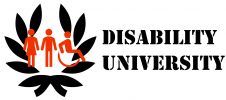 WHAT IS ADD?
WHAT IS ADD?
Attention Deficit Disorder, or ADD/ADHD, is a psychological term currently applied to anyone who meets the DSM IV diagnostic criteria for impulsivity, hyperactivity and/or inattention. The diagnostic criteria are subjective and include behavior which might be caused by a wide variety of factors, ranging from brain defects to allergies to giftedness. Statistics indicate that between 6 percent and 8 percent of children have ADHD. There is also a 30 percent chance that if a child is diagnosed with ADHD a sibling will also have ADHD. Children with ADHD may also have a parent with ADHD.
ADD, as currently defined, is a highly subjective description, not a specific disease. The understanding of ADD in the popular culture is compromised by the assumption that everyone diagnosed with ADD suffers from a brain malformation or birth defect. This misconception is not always the case. The causes of ADD are many and are not entirely understood by science. It can be a result of heredity, encephalitis, lead poisoning, or even a misdiagnosis.
The ADD diagnostic criteria have been so broadened as to include many people with no brain defects at all. ADD is diagnosed by exhibited behavior and not by the source of the behavior. This had lead to the concern that a number of people who are diagnosed has having ADD are not ADD in the traditional sense or may not be ADD at all.
There are three major types of ADD: ADD with hyperactivity (the traditional type of ADD), ADD without hyperactivity (“inattentive” type), and a combined form of ADD exhibiting signs from these two types.
Here are the DSM IV diagnostic criteria in a condensed form:
Inattention (must meet six of the following to a degree that is “maladaptive”):
- Often fails to give close attention to details or makes mistakes in schoolwork;
- difficulty sustaining attention in tasks;
- seems not to listen;
- fails to follow instructions or finish work;
- unorganized;
- difficulties with schoolwork or homework;
- loses things like school assignments, books, tools, etc.;
- easily distracted;
- forgetful about daily activities.
ADD with Hyperactivity (must meet six of the following to a degree that is “maladaptive”):
- fidgety in a squirmy sense;
- doesn’t stay seated;
- runs or climbs excessively (or feelings of restlessness in older children);
- difficulty playing quietly;
- often “on the go” or acts if “driven by a motor”;
- often talks excessively;
- blurts out answers to questions;
- difficulty waiting in lines or waiting turns;
- often interrupts or intrudes on others.
Signs of ADD in children must be presented by the age of 7 and must be displayed in two different settings (i.e. home and school). A child who acts out at school but not at home could be exhibiting signs of oppositional defiant disorder or conduct disorder (which may be co-morbid with ADD). Development of the symptoms at a later age when the child has presented no previous ADD behavior are likely a result of another issue such as anxiety, depression, or allergies.
ADD exists alone in only 1/3 of individuals who receive a diagnosis. Common co-existing conditions include:
- Oppositional Defiant Disorder — ongoing pattern of disobedient, hostile, and defiant behavior toward authority figures which goes beyond the bounds of normal childhood behavior.
- Conduct Disorder — pattern of repetitive behavior where the rights of others or the current social norms are violated. Symptoms include verbal and physical aggression, cruel behavior toward people and pets, destructive behavior, lying, truancy, vandalism, and stealing.
- Anxiety Disorder — blanket term covering several different forms of abnormal and pathological fears and anxieties.
- Mood Disorders — a disturbance in the person’s emotional mood is the main underlying feature. Depression is a common mood disorder
- Obsessive-Compulsive Disorder – pattern of voluntary irrational, time-consuming physical behaviors intended to diminish anxiety.
- Bi-Polar Disorder — defined by the presence of one or more episodes of abnormally elevated mood clinically referred to as mania. Individuals who experience manic episodes also commonly experience depressive episodes or symptoms, usually separated by periods of “normal” mood.
